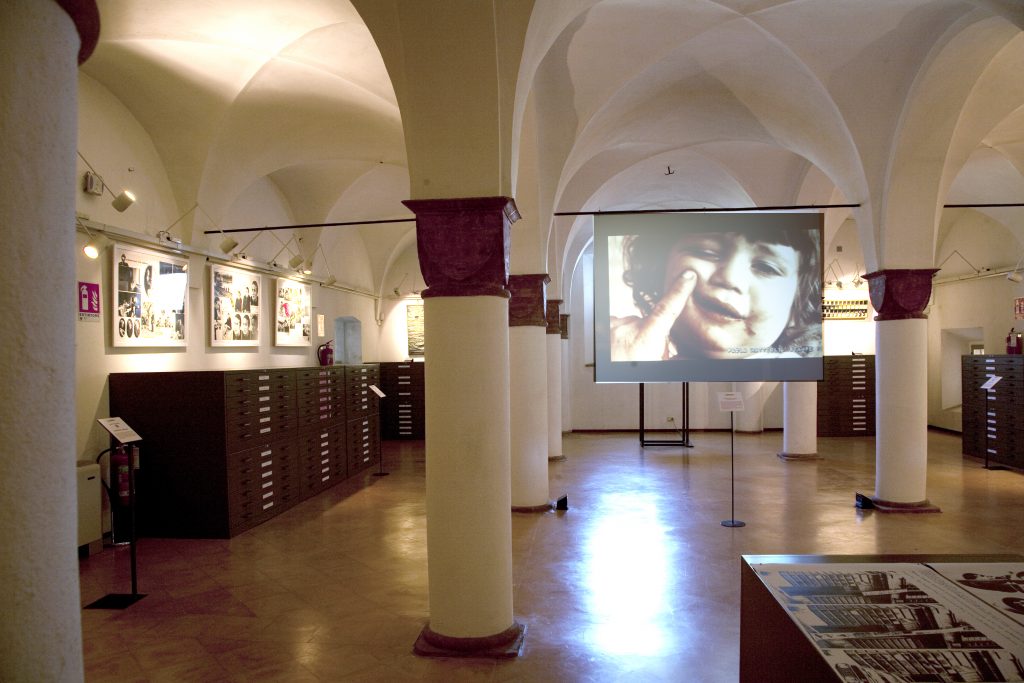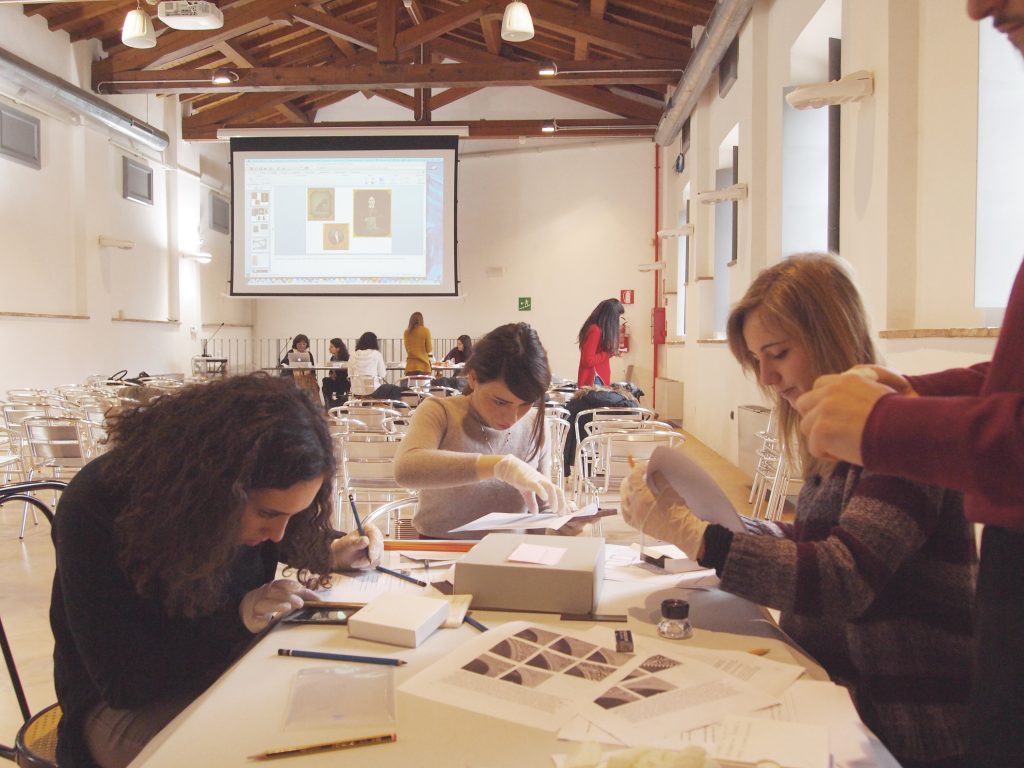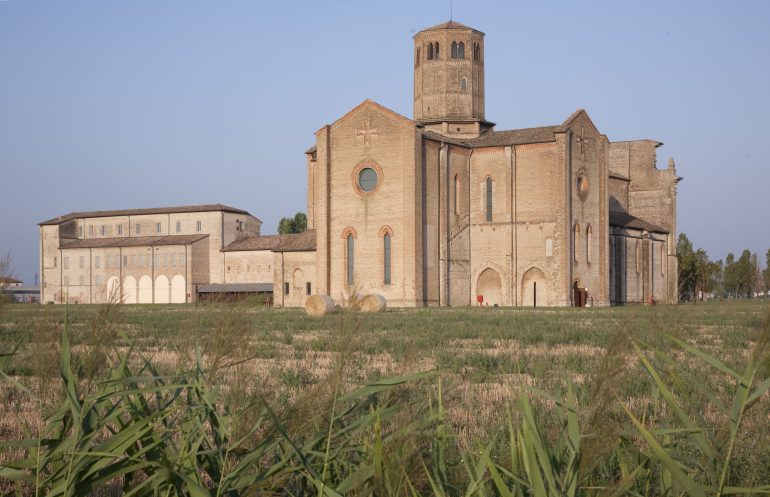by Luca Sorbo
_
The Italian photographic culture owes a lot to the Centro Studi e Archivio della Comunicazione (Study Center and Archive of Communication) of Parma, which was one of the first public institutions to deal with photography in a conscious and competent way. The Archive comprises five sections – Art, Photography, Media, Design, Entertainment – and contains about twelve million pieces, of which nine million, between prints and negatives, are photographs. Its creation was very innovative and to an extent it still is, it remains a fundamental point of reference and that is why I decided to begin this cycle of articles on Italian photographic archives by telling its past and its present. Its current location, the Cistercian Abbey of Valserena, also known as the Abbey of Paradigna, is a treasure chest of marvels and knowledge. Dr. Claudia Cavatorta, who deals with conservation and knows every aspect of this prestigious institution that is part of the University of Parma, guides us in this journey.

It all began in the early 1960s, when Carlo Arturo Quintavalle, one of the leading Italian experts in medieval art history, was invited by some of the most prestigious American universities as a visiting professor. During that trip, Quintavalle visited various archives, including the Library of Congress and the Museum of Modern Art in New York, which was among the first to give due dignity to the “imprints of light”. He realized the important role that American culture entrusted to photography, even that of simple reportage and documentation. He understood the importance of acquiring entire archives and not just the most famous images, he became aware that the peculiarity of the “imprints of light” is that of being part of a production and fruition process that cannot be reduced to the creation of some valuable work, but has in its complexity its most valuable asset. In those years photography in Italy was almost ignored by the academic world, with some praiseworthy exceptions.
Quintavalle met and became friends with the head of the photography department at MOMA in New York, John Szarkowski, who succeeded Edward Steichen, the department’s first director ever. From this friendship sprung some of the most interesting exhibitions of the early seventies, such as the one on Lee Friedlander and New Photography USA. He acquired about 3000 photos from the Farm Security Administration for the University of Parma. Also worth mentioning are the first anthology of Ugo Mulas in 1973, of Nino Migliori in 1977, of Luigi Ghirri in 1979 and of Mario Giacomelli in 1980. These were very significant exhibitions for Italy, where photographic culture, amidst many uncertainties, sought its own autonomous dimension. Today at the CSAC there are over three hundred collections for a total of about nine million images.

Returning to Parma in 1968, enriched by these experiences, the academic succeeded in founding the Study Center and Archive of Communication inside the Palazzo della Pilotta. Here, on the ground floor, he set the first room in Italy for the conservation of the different photographic supports. The choice of the word archive is important, since it is in some way opposed to the term museum, where the objects are organized in a hierarchical way, while in the archive they have an equal value.
Even the current exhibitions are always created with the intention of emphasizing the relationships between the various objects and not only of exhibiting the finest pieces. The institution’s mission is to acquire all the materials related to communication including sketches of fashion design, architect’s projects, all objects that until that moment had no attention and, except in rare cases, went lost if not destroyed. The first photographic archives he acquired were those of the Bolognese studio Achille Villani and the Milanese photographer Bruno Stefani. The idea, from the very beginning, was to create a public collection strictly connected to teaching and research.

The method that Quintavalle uses for these documents is the same used for the analysis of medieval documents, i.e. examining the object from all angles, in all its complexity, placing it within a communicative process in order to reconstruct a cultural context of fruition and production. The object finds its identity only in this context. Even the numerous exhibitions are always built keeping this founding principle in mind.
Since 2007 the headquarters of the CSAC has been the Abbey of Valserena, which, after a careful philological recovery of its medieval structure, has become an efficient multifunctional area with a fascinating exhibition space in the church. The centre is mainly visited by university students, researchers and scholars who can find valuable documents for their researches. Numerous and very precious are the photographic archives here preserved, among others Villani and Stefani’s, the Archives of Studio Vasari in Rome, that of the major photographic studios of Parma (Vaghi, Tosi), very substantial units (over 500 specimens) of prints by important photographers such as Luigi Ghirri, Nino Migliori and Mario Giacomelli.

Claudia Cavatorta reminds us that CSAC is now a multipurpose building, equipped with a conference room and a guesthouse that can accommodate thirty-five people and that in the past hosted Summer Schools, conferences and symposiums of various kinds. Among the many projects underway, the most recent one, which sees the collaboration of several young scholars from the University of Parma, is one aimed at increasing the accessibility – direct and virtual – of archives of the various Sections.
For any further information and to view the collections online and book a visit, you can consult the website www.csacparma.it.
All images: Courtesy CSAC Parma
August 23, 2021




